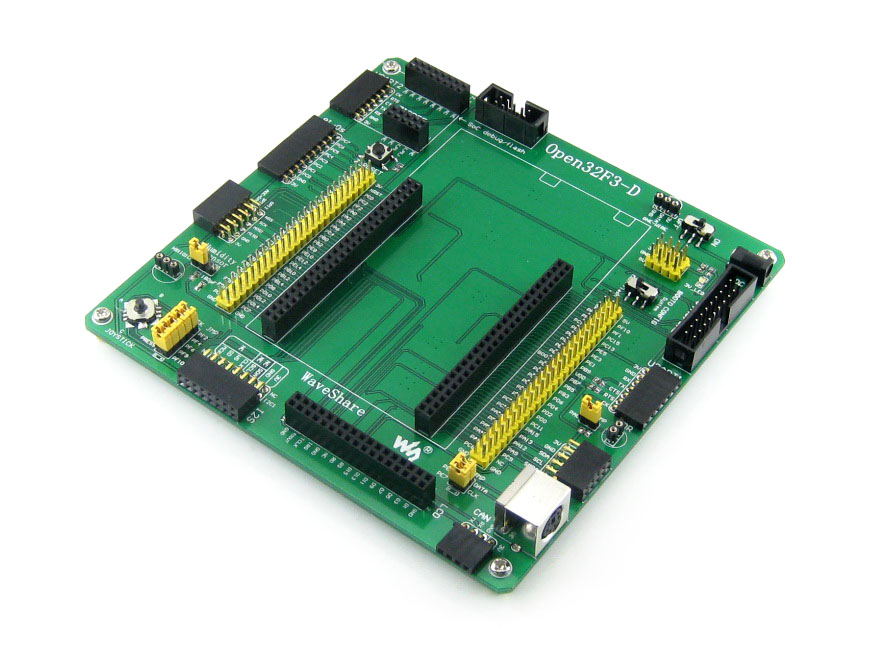1. Open3D-ML安裝和使用
首先對于Open3d,我們要先對源碼下載
# make sure you have the latest pip version pip install --upgrade pip # install open3d pip install open3d
然后選擇要安裝兼容版本的PyTorch或TensorFlow,Open3d中提供了兩種安裝方式:
# To install a compatible version of TensorFlow pip install -r requirements-tensorflow.txt # To install a compatible version of PyTorch with CUDA pip install -r requirements-torch-cuda.txt
這里作者選擇的是Pytorch,因為作者對Pytorch比較熟悉,然后使用下面命令測試Open3d是否安裝成功
# with PyTorch python -c "import open3d.ml.torch as ml3d" # or with TensorFlow python -c "import open3d.ml.tf as ml3d"
下面我們可以下載數據集進行測試了
SemanticKITTI (project page)
Toronto 3D (github)
Semantic 3D (project-page)
S3DIS (project-page)
Paris-Lille 3D (project-page)
Argoverse (project-page)
KITTI (project-page)
Lyft (project-page)
nuScenes (project-page)
Waymo (project-page)
ScanNet(project-page)
這里選擇了SemanticKITTI的數據集進行測試
# Launch training for RandLANet on SemanticKITTI with torch. python scripts/run_pipeline.py torch -c ml3d/configs/randlanet_semantickitti.yml --dataset.dataset_path--pipeline SemanticSegmentation --dataset.use_cache True # Launch testing for PointPillars on KITTI with torch. python scripts/run_pipeline.py torch -c ml3d/configs/randlanet_semantickitti.yml --split test --dataset.dataset_path data --pipeline SemanticSegmentation --dataset.use_cache True --batch_size 16
雖然官方提供的predefined scripts非常便捷,但是既然我們裝好了Open3d,那我們就可以通過自己編寫代碼的方式來完成。
2. 基于Open3d的二次開發
下面將展示如何自己去調用Open3d的api去寫訓練集、測試集、可視化
模型訓練:
import os import open3d.ml as _ml3d import open3d.ml.torch as ml3d cfg_file = "ml3d/configs/randlanet_semantickitti.yml" cfg = _ml3d.utils.Config.load_from_file(cfg_file) cfg.dataset['dataset_path'] = "./data" dataset = ml3d.datasets.SemanticKITTI(cfg.dataset.pop('dataset_path', None), **cfg.dataset) # create the model with random initialization. model = ml3d.models.RandLANet(**cfg.model) pipeline = ml3d.pipelines.SemanticSegmentation(model=model, dataset=dataset,device="cuda:0", **cfg.pipeline) # prints training progress in the console. pipeline.run_train()
在這里主要需要側重關注的有兩處:cfg_file和cfg.dataset['dataset_path'],這兩處分別是環境配置和數據集設置。
在randlanet_semantickitti.yml中里面包含了所有需要配置的內容
randlanet_semantickitti.yml
dataset: name: Semantic3D dataset_path: # path/to/your/dataset cache_dir: ./logs/cache_small3d/ class_weights: [5181602, 5012952, 6830086, 1311528, 10476365, 946982, 334860, 269353] ignored_label_inds: [0] num_points: 65536 test_result_folder: ./test use_cache: true val_files: - bildstein_station1_xyz_intensity_rgb - domfountain_station1_xyz_intensity_rgb steps_per_epoch_train: 500 steps_per_epoch_valid: 10 model: name: RandLANet batcher: DefaultBatcher ckpt_path: # path/to/your/checkpoint num_neighbors: 16 num_layers: 5 num_points: 65536 num_classes: 8 ignored_label_inds: [0] sub_sampling_ratio: [4, 4, 4, 4, 2] in_channels: 6 dim_features: 8 dim_output: [16, 64, 128, 256, 512] grid_size: 0.06 augment: recenter: dim: [0, 1] normalize: feat: method: linear bias: 0 scale: 255 rotate: method: vertical scale: min_s: 0.9 max_s: 1.1 noise: noise_std: 0.001 pipeline: name: SemanticSegmentation optimizer: lr: 0.001 batch_size: 2 main_log_dir: ./logs max_epoch: 100 save_ckpt_freq: 5 scheduler_gamma: 0.9886 test_batch_size: 1 train_sum_dir: train_log val_batch_size: 2 summary: record_for: [] max_pts: use_reference: false max_outputs: 1
模型測試:
import os import open3d.ml as _ml3d import open3d.ml.torch as ml3d cfg_file = "ml3d/configs/randlanet_semantickitti.yml" cfg = _ml3d.utils.Config.load_from_file(cfg_file) model = ml3d.models.RandLANet(**cfg.model) cfg.dataset['dataset_path'] = "./data" dataset = ml3d.datasets.SemanticKITTI(cfg.dataset.pop('dataset_path', None), **cfg.dataset) pipeline = ml3d.pipelines.SemanticSegmentation(model, dataset=dataset, device="cuda:0", **cfg.pipeline) # download the weights. ckpt_folder = "./logs/" os.makedirs(ckpt_folder, exist_ok=True) ckpt_path = ckpt_folder + "randlanet_semantickitti_202201071330utc.pth" randlanet_url = "https://storage.googleapis.com/open3d-releases/model-zoo/randlanet_semantickitti_202201071330utc.pth" if not os.path.exists(ckpt_path): cmd = "wget {} -O {}".format(randlanet_url, ckpt_path) os.system(cmd) # load the parameters. pipeline.load_ckpt(ckpt_path=ckpt_path) test_split = dataset.get_split("test") print("len%d",test_split) data = test_split.get_data(0) # run inference on a single example. # returns dict with 'predict_labels' and 'predict_scores'. result = pipeline.run_inference(data) # evaluate performance on the test set; this will write logs to './logs'. pipeline.run_test()
在模型測試中和模型訓練一樣也需要cfg_file和cfg.dataset['dataset_path'],但是同時需要加入ckpt_path作為訓練模型的導入。
模型可視化
import os
import open3d.ml as _ml3d
import open3d.ml.torch as ml3d
cfg_file = "ml3d/configs/randlanet_semantickitti.yml"
cfg = _ml3d.utils.Config.load_from_file(cfg_file)
cfg.dataset['dataset_path'] = "./data"
# construct a dataset by specifying dataset_path
dataset = ml3d.datasets.SemanticKITTI(cfg.dataset.pop('dataset_path', None),**cfg.dataset)
# get the 'all' split that combines training, validation and test set
all_split = dataset.get_split('test')
# print the attributes of the first datum
print(all_split.get_attr(0))
# print the shape of the first point cloud
print(all_split.get_data(0)['point'].shape)
# show the first 100 frames using the visualizer
vis = ml3d.vis.Visualizer()
vis.visualize_dataset(dataset, 'all', indices=range(100))
模型可視化就沒什么好說的了,基本上和上述兩種差不不多,只是使用了ml3d.vis.Visualizer()做了可視化。
3. 如何理解SemanticKITTI數據集
KITTI Vision Benchmark 的里程計數據集,顯示了市中心的交通、住宅區,以及德國卡爾斯魯厄周圍的高速公路場景和鄉村道路。
原始里程計數據集由 22 個序列組成,將序列 00 到 10 拆分為訓練集,將 11 到 21 拆分為測試集。
SemanticKITTI數據集采用和 KITTI 數據集相同的標定方法。這使得該數據集和kitti數據集等數據集可以通用。
該數據集中對28個類進行了注釋,確保了類與Mapillary Visiotas數據集和Cityscapes數據集有很大的重疊,并在必要時進行了修改,以考慮稀疏性和垂直視野。

bin文件中存儲著每個點,以激光雷達為原點的x,y,z,i信息,其中i是強度。
把數據提取出來也很簡單。用numpy庫。提取出來就是一個n行4列的矩陣。
points = np.fromfile(".bin文件路徑", dtype=np.float32).reshape(-1, 4)
接下來就是.label文件,在KITTI API的github中能找到說明。
里面東西也挺多的,主要就看.label那部分。
在remap_semantic_labels.py文件中。終于知道,label中每個值表示什么了。
在config目錄下的semantic-kitti.yaml文件中。
label = np.fromfile(".label文件路徑", dtype=np.uint32)
label = label.reshape((-1))
我們還區分了移動和非移動車輛與人類,即,如果車輛或人類在觀察時在某些掃描中移動,則會獲得相應的移動類別。
下圖列出了所有帶注釋的類,補充材料中可以找到對不同類的更詳細討論和定義。
總之,我們有28個類別,其中6個類別被指定為移動或非移動屬性

每個velodyne文件夾下的xxxx.bin文件為每次掃描的原始數據,每個數據點的標簽的二進制表示儲存在文件xxxx.label中。
每個點的標簽是32位無符號整數(也稱為’uint32_t’),其中較低的16位對應于標簽。
較高位對應了16位編碼實例id,該id在整個序列中時間上是一致的,即兩次不同掃描中的同一對象獲得相同的id。
這也適用于移動車輛,但也適用于環路閉合后看到的靜態對象。
這里是開源SemanticKITTI的API。功能包括但不限于:可視化、計算IOU等。按照腳本的介紹即可完成使用。
審核編輯:湯梓紅
-
開源
+關注
關注
3文章
3309瀏覽量
42471 -
源碼
+關注
關注
8文章
639瀏覽量
29185 -
pytorch
+關注
關注
2文章
807瀏覽量
13200
原文標題:基于Open3D的Lidar-Segment
文章出處:【微信號:vision263com,微信公眾號:新機器視覺】歡迎添加關注!文章轉載請注明出處。
發布評論請先 登錄
相關推薦
淺談SiPM 傳感器在汽車 LiDAR的應用

LiDAR如何構建3D點云?如何利用LiDAR提供深度信息

Atmel Segment LCD1用戶指南
TriLumina將推出940nm VCSEL照明,包羅3D LiDAR系統
微雪電子STM32開發板 Open32F3-D簡介

微雪電子STM32開發板 Open32F3-D簡介

微雪電子STM32開發板 Open32F3-D簡介

日本Konami與假Open Bionic合作,推出了一款3D打印的仿生手臂
Quanergy和PARIFEX合作發布基于3D LiDAR的超速抓拍系統
3D LiDAR 社交距離解決方案

徹底搞懂基于Open3D的點云處理教程!

應用于機器人3D感知的高精度LiDAR與電機驅動解決方案

基于LiDAR的行人重識別的研究分析





 基于Open3D的Lidar-Segment
基于Open3D的Lidar-Segment












評論